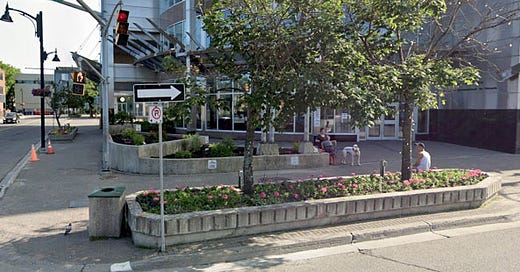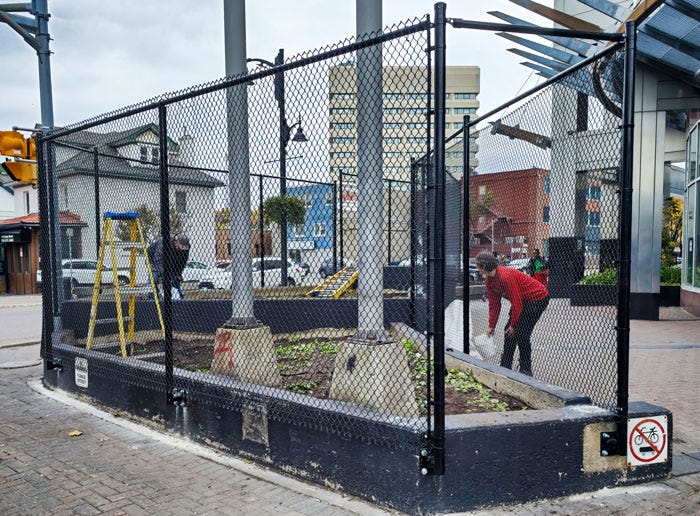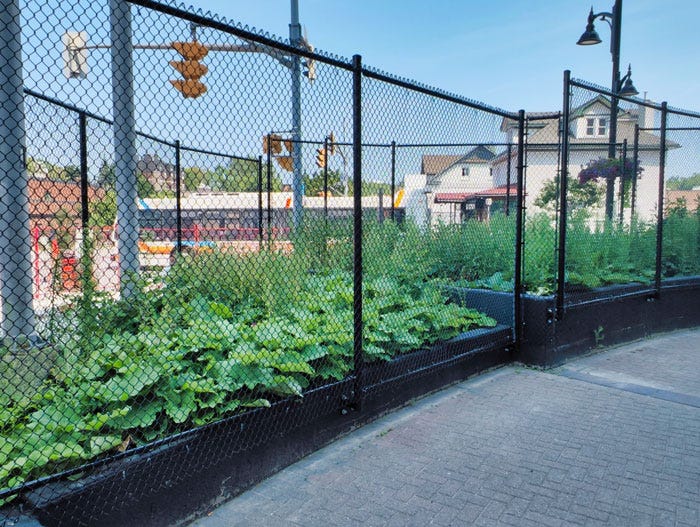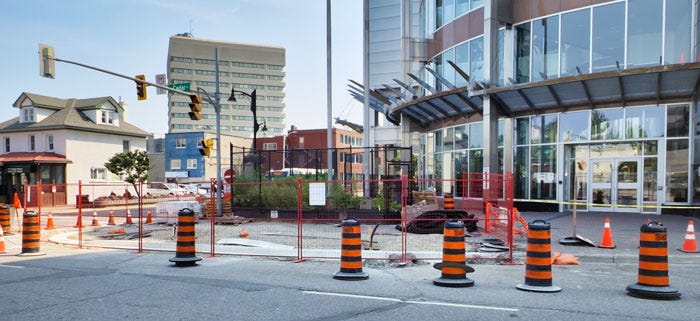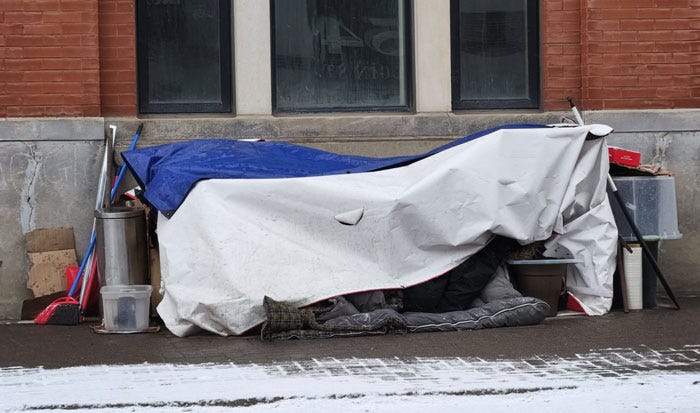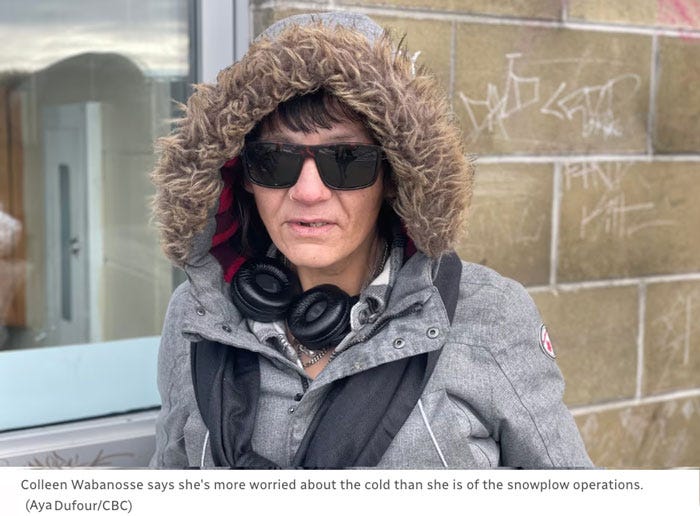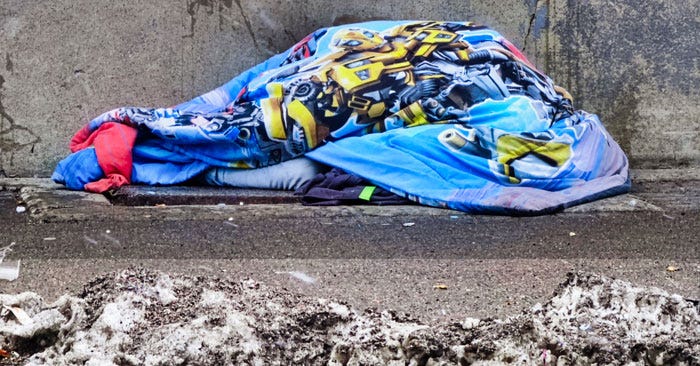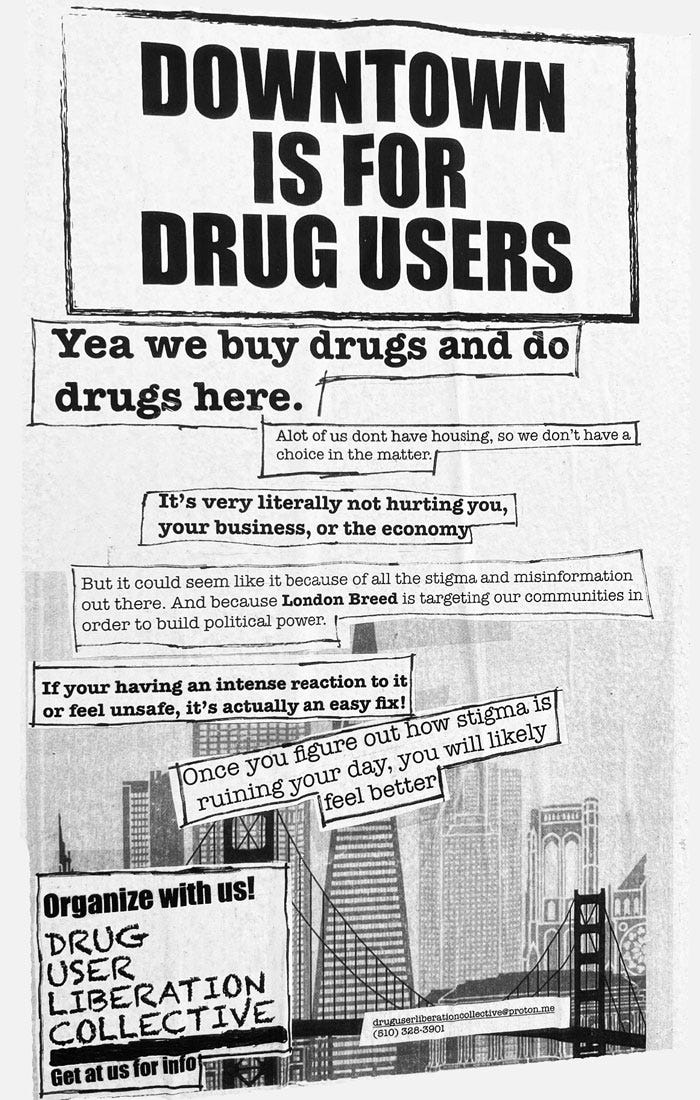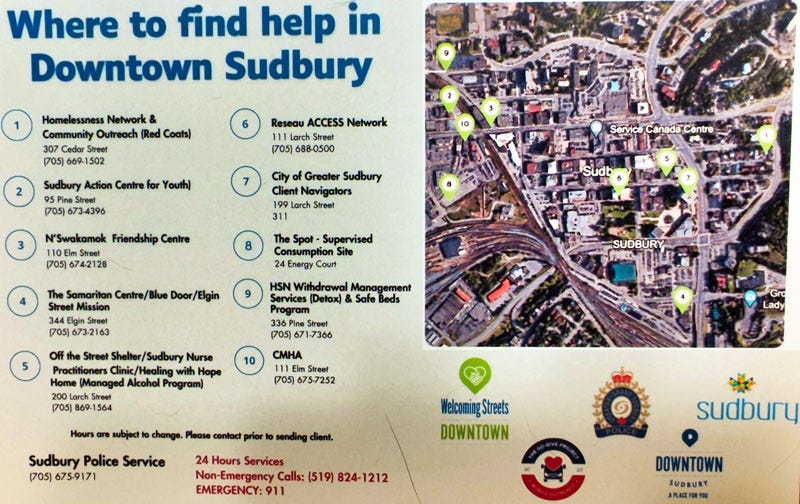Hostile architecture can be so cruel
In Sudbury, the Ontario Government Building is directly across the street from the downtown bus terminal.
Google Street view
This is what the front view of the street looked like in the summer of 2023. In the front courtyard, there is a raised flowerbed that the public would sit on.
In the front of building on the very wide sidewalk, the city had a raised flowerbed that featured two mature trees.
In the hot summer days, people, including the homeless, would sit under the shade provided by the two trees. Shade is hard to come by in downtown Sudbury.
In the autumn of 2023, the government building installed an eight-foot high, black chain-link fence on the concrete ledges.
This was done to prevent the homeless from sitting on them.
In 2024, the green ferns could not hide that fact that this is a very ugly fence.
The homeless still had the city-owned flowerbed that was located on the sidewalk.
In early August 2024, I was surprised and very disappointed to see that the city ripped out the concrete flowerbed that was in front of the building.
The trees were gone and new concrete curbs installed.
It will take years for these saplings to provide any shade. Even then, what good will they do if there is no seating? (Well I suppose the dogs will have a place to pee.)
It is obvious that the eight-foot fencing and the removal of the city-owned flower bed was done solely to move the homeless along. Where to, is never said.
Sudbury's unhoused used this space to keep warm, until the city covered it with a trash can
A spokesperson says the garbage bin was positioned there for safety reasons
Two tarps covering the homeless who are sleeping over the warm heating grate.
CBC News (abridged)
Aya Dufour
28 November 2024
The City of Greater Sudbury says a garbage bin was screwed on top of the sidewalk grate on Elgin Street as it was a space repeatedly used for encampments and "posed a significant risk to those staying there during snowplow operations."
But some unhoused people told CBC they don't believe this was done for their safety.
Colleen Wabanosse has spent several cold winter nights on top of the grate, capturing the warmth coming out of the vent.
"It used to be the warmest, safest place to be," she said.
"It almost felt like being in an apartment, that's how warm it was. It would heat your tent right up."
Wabanosse has been experiencing homelessness and a drug use disorder for years. She'll sometimes go to the shelter, if there are free beds, but she'd rather be outside in a tent.
"It's my own space. I can do my drugs and I'm more comfortable, not stressed about people stealing my stuff or bothering me," she said.
A person is sleeping over the heating grate. (early 2024)
Wabanosse and other unhoused people say they were distraught to find that a trash can had been installed in that spot. "There's barely any heat coming out of it now… We won't be able to stay there. The garbage can covers the whole vent."
"Our tent always had orange tarp over it… the snowplows knew we were there," she said, adding they spoke with operators and shovelled the space they were using themselves. "They didn't seem to have a problem with us there. This is about more than that."
Architect wishes alternatives had been explored
The sidewalk grate is in front of Laurentian University's McEwen School of Architecture, an institution that has supported and published work advocating against the use of design to exclude certain people from public spaces.
Christopher Baziw, a graduate of the program, has researched hostile architecture.
He believes the city should have looked at other ways to keep people safe.
The heating grate with a trash can that is bolted to the concrete.
"A trash can is one option, but why not just put some bollards around the grate? That way the snowplow isn't going to hit people. It's a more dignified response.” He said the city uses big bright bollards all the time to prevent things like fire hydrants from being damaged by the plows.
"The city uses concrete bollards to defend a fire hydrant, but then a trash can to protect someone who's unhoused… What does that tell you?"
CBC asked to interview city staff to learn more about the decision to block access to the sidewalk grate, but no one was made available.
The short statement received instead reads: "The garbage bin placed on the sidewalk grate near 85 Elm Street was positioned there for safety. The grate was repeatedly used as a space to build encampments and posed a significant risk to those staying there during snowplow operations."
The city did not specify how many incidents have occurred during snow plowing in areas where unhoused people have set up their tents. This story will be updated if an interview is granted.
From denying seating and shade in the hot summer months to denying a source of heat during the cold winters, the City of Greater Sudbury is making it clear that the homeless are not welcome to share the downtown streets with the people who have money. So now, the homeless have few places where they can congregate and far fewer places where they are welcome.
San Francisco drug activist’s poster (it has a strong Marxist point of view)
The homeless are not going to leave the downtown. That is where their services are located. There are two emergency shelters in the downtown, with a third one opening soon. There are at least three methadone clinics, several mental health offices, two soup kitchens, social service NGOs, an store-front that provides free drug use paraphernalia and a warming centre in the downtown.
They are people and people are social animals. The homeless need public places to meet, socialize and talk with their friends and peers. The outreach teams need to know where to find them. The downtown needs 24/7/365 washroom facilities and benches for the public and the public definitely includes the homeless.
This map does not include all the downtown servies.
If the city and the Downtown BIA wants the homeless to vacate the downtown, then they need to move all their services out of the downtown to a new location in Sudbury. That I suppose would cost about the same amount of money as the new arena will cost.

